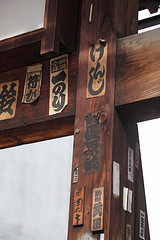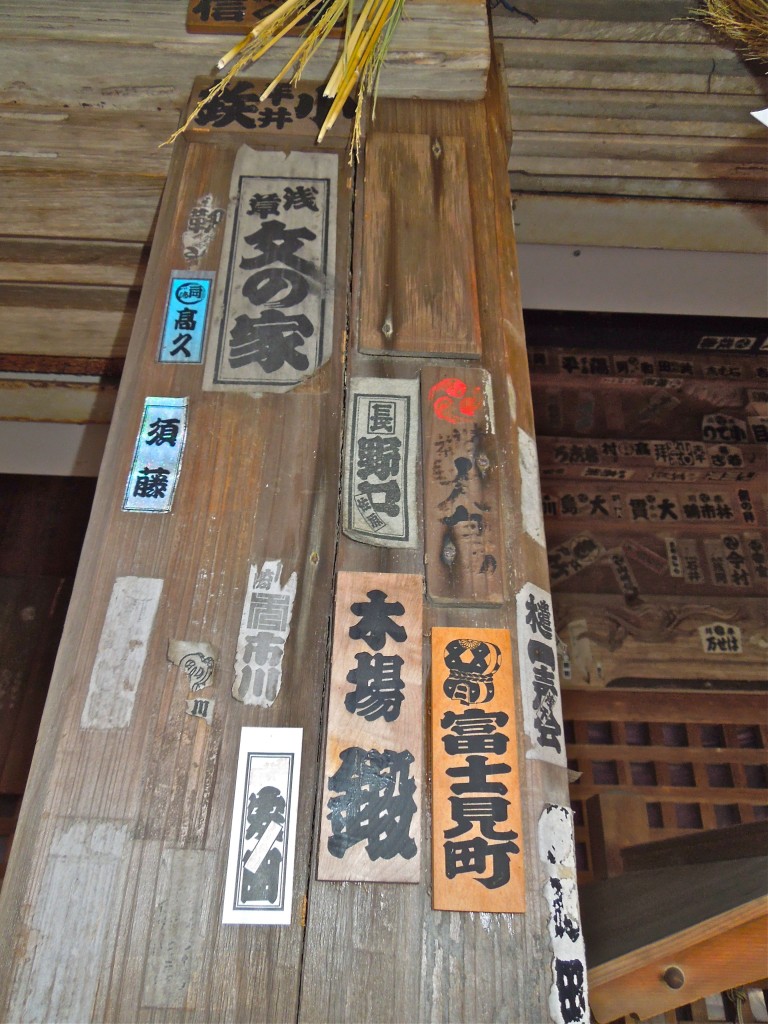
Senjafuda placed improbably high on the central beam of a shrine building
When visiting shrines and temples, you’ll sometimes find stickers on the building, as in the picture above. What are they, and what do they say? From my experience they usually bear the name of a person or company, but to what end I wasn’t sure. For an explanation I looked to two different sources on the subject: the first by Timothy Takemoto (Timothy runs the Shinto mailing list), the second from the authoritative website on Japanese religions run by Mark Schumacher (Onmark Productions.com). My thanks to both of them.
*******************************************
For the full version of this extract by Timothy Takemoto, please see here: Senjafuda – One Thousand Shrine Labels.

Photo courtesy ebookworm on Flickr, who notes that in Edo times wealthy merchants competed with fancy designs such that the Shogunate tried to ban the practice.
If you visit shrines in Japan, you’ll find some that are covered in stickers. It is traditional to print one thousand of them and then visit one thousand shrines and paste them to the roof of the entrance as a sort of “I was here” type marking. If one pastes one’s name on one thousand shrines (Senja) then a wish will come true, apparently.
The pasting of the labels is often done under the cover of darkness, or otherwise when priests are not looking, but some shrines and temples charge for the privilege of pasting one’s mark on their shrine gate. The practice of labelling shrines may be similar to the way in which Japanese travellers and other tourists visit famous spots (meisho) such as shrines, and associate with them and their previous visitors such as Basho, often in poetry in a travelogue, and to the practice of leaving small stones on the gates of Shinto shrines.
*********************************
According to Mark Schumacher on the onmark website, Senja Fuda (which he spells senjya-fuda) are “Name stickers that pilgrims paste or stick on the temple gate or shrine gate to prove that they visited that location. In modern times, most pilgrimage sites no longer allow this, primarily as a means for protecting the aging temple/shrine structures. Instead, pilgrims now offer prayer slips. In the old days, you needed a special long (telescope-like) pole to stick them really high up on the rafters and ceilings of the gates. The senjya-fuda tradition apparently became popular during the Edo Period (1603-1867), when many believed that good fortune would come to them while their sticker remained attached to the temple or shrine gate.”

Senja stickers stuck to a pillar of a shrine - proof to the kami that the pilgrim or pilgrim group was really here

I’ve seen these, good explanation,tx